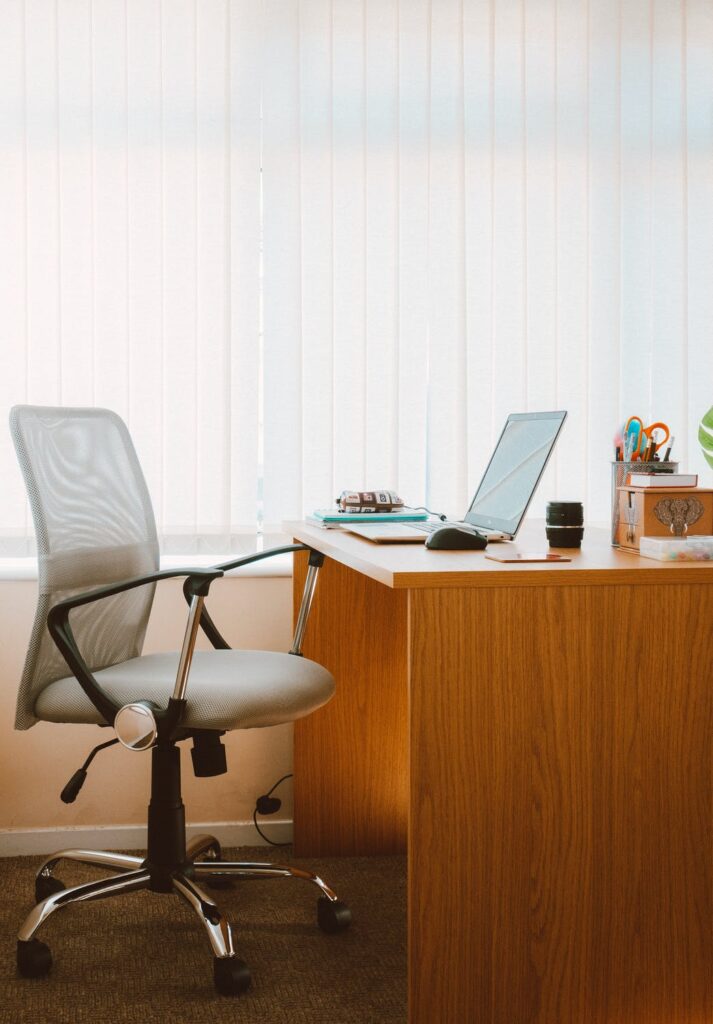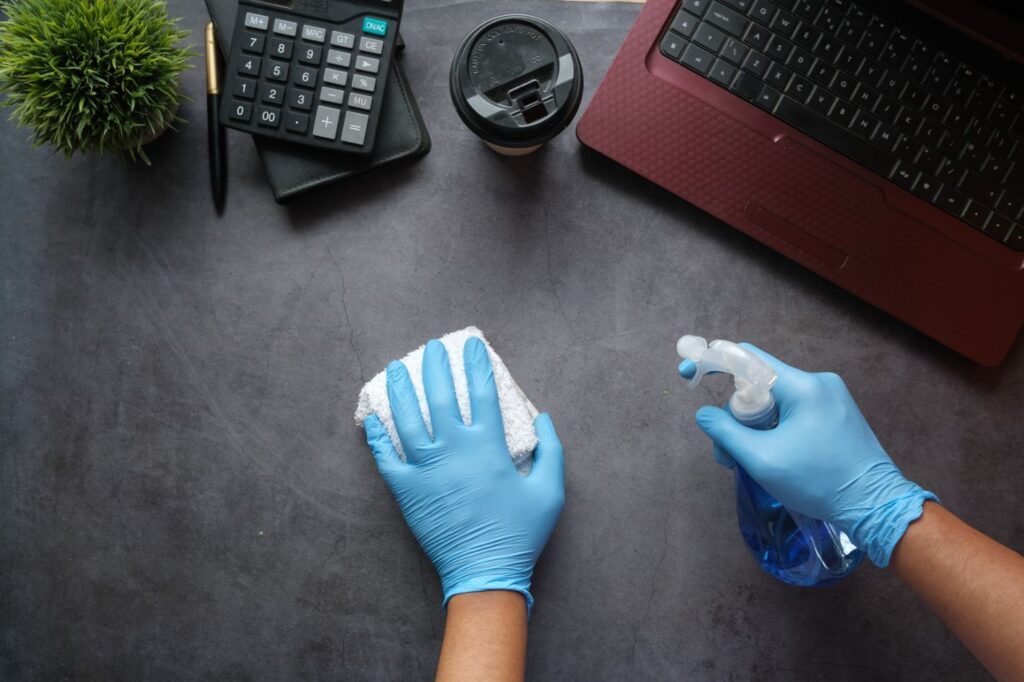Disinfect the Office in 6 Easy Steps
Cleaning and sanitizing are essential to workplace safety and employee health. Disinfecting office equipment and furniture can save your company weeks of productivity.
The novel coronavirus can harm you or your employees.
Properly cleaning and sanitizing equipment are essential to doing the job.
1. Plan How to Disinfect the Office
One of the biggest mistakes office workers and employers make is thinking that stuff will get cleaned or that wiping down the break room counters after a coffee spill is cleaning. Office disinfection requires a plan.
In an office where employees clean, disinfect, and sanitize, everyone must know what, when, and how. It will benefit office workers and slow COVID-19 spread.
2. Disinfect All Surfaces Regularly
In 2012, the University of Arizona scientists found that desks and other office surfaces are filthy and full of bacteria and germs. Your plan should encourage all employees to clean and disinfect their workspace at least twice daily (before starting and ending the workday).
Disinfectant wipes should cover the following:
- Laptop or keyboard
- Stapler, tape dispenser, and other frequently used supplies
- All desktops
- Remember your office chair arms.
- Make sure someone disinfects light switches and doorknobs with wipes. Disinfect other frequently touched areas daily.
3. Sanitize Common Areas
Your break rooms, conference rooms, and other shared spaces get a lot of traffic. While the break room has more food, the conference room has donuts and other snacks during meetings.
Wash-cleaning these areas before disinfection can deter pests, which can be as harmful as viruses.
According to Washington State University’s Institutional Animal Care and Use Committee, mice attracted by food left on surfaces can spread diseases like:
- Coli diseases
- Giardia
- Hantavirus \ Leptospirosis
- Salmonella
Roaches can carry pathogens like:
- Cholera \ Dysentery
- Gastroenteritis \ Listeriosis
- Typhoid
- Daily cleaning without disinfection keeps these pests away. Maintaining surfaces helps clean the workplace.
4. Clean the Restrooms Daily
It reduces odors. The CDC recommends cleaning high-touch surfaces in bathrooms daily.
Also, post-COVID, handwashing is encouraged more than ever. Offices must stock restroom supplies, including hand sanitizer, more often. Hand hygiene needs will increase restroom traffic, requiring more frequent cleaning.
5. Empty Trash
Emptying the trash is a simple but hated task that can clean an office. Disinfecting requires chemicals—not garbage removal. Like break room food, full trash bins attract visitors.
Even if the office has a cleaning service, employees should empty the trash when it’s complete. “That’s not my job” shouldn’t exist in this office setting.
6. Vacuum carpets and fabric mats with HEPA-filtered vacuums when the office is empty.
Vacuuming does not disinfect, but cleaning and disinfecting together sanitize. It removes traffic and space detritus.

Crumbs attract bugs and other pests, making the floor dirty.
Vacuum high-traffic areas daily and low-traffic regions weekly.
Smart Office Disinfection Advice
The above steps will help office workers stay healthy and safe. Whether your office uses a professional cleaning service or employees disinfect and clean, these tips can help maximize cleaning efforts.
Disinfection: Wipe One Way
Use a microfiber cloth for best results, but even if you’re using paper towels, don’t wipe a disinfected surface again. Redepositing germs is possible.
Protect Yourself.
An anti-dust keyboard cap cover can help clean equipment. You can quickly wipe down this keyboard shower cap without worrying about cleaning liquids getting inside.
No crumbs in your keyboard, and a disinfecting wipe if you sneeze.
Refrigerate!
Left food will mold. It’ll stink. Mold can spread and pollute the air. All fridge door openers touch high-touch surfaces. Does your office not open the fridge daily?








